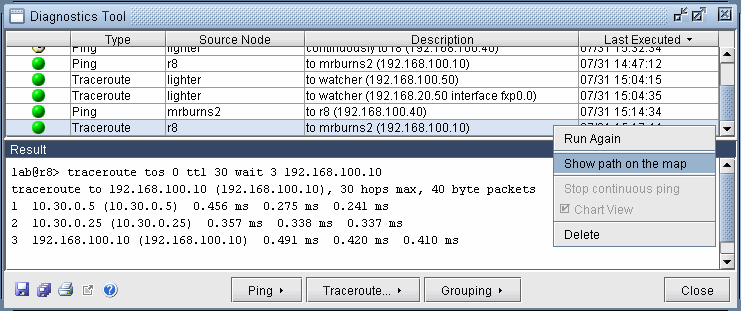

This command returns the internet address when a hostname is specified or the hostname when the internet address is specified. Lists the current users logged in from remote machines, including username, hostname, idle time, and so on Probably reasons are:Īrp -d dospc (Remove the dospc entry from the arp table) Outputs: dospc (193.0.0.8) at 10:0:5a:2b:69:64 Īn incomplete entry in the network address field means the node in question could not be contacted. If by chance, you have two nodes on your network with the same internet address, you will have periodic problems keeping a connection to one of those two machines until a unique internet address is assigned to each machine.Įxamples: arp -a (Displays all addresses that have been translated by the address resolution
Iptrace command Pc#
If there is an entry in the arp table, then you know that packets are getting across and the problem lies with the DOS SERVER or PC DOS CLIENT software. For example, if you are using the DOS SERVER daemons to connect PCs to the RS/6000 and connections aren’t being made, check the arp table to see if there is a hostname entry for the name of the PC you are connecting from.Useful tool for debugging network problems. A host may have more than 1 network interface as illustrated by the output of the netstat -i command. Note that an IP address is really assigned to a network interface and not a host. The last three bytes are assigned by the manufacturer. The first three bytes of the address represent a vendor’s ID. This physical address is six bytes long and is unique for every network board.

An ALIAS entry cannot be specified.ĭefines which clients are permitted to execute commands by the lpd, rlogind, rcpd, or rshd daemons without supplying a password.ĭefines which clients are permitted to print jobs to the print server.ĭisplays the translation table between TCP/IP addresses and network addresses. The file resides on the server machine under the home directory of the user account being logged into. Get /tmp/database.log /tmp/log/database.logĭefines which client users are not required to supply a login password for the rcp, rlogin, or rsh commands using a user account on the server.
Iptrace command password#
Machine sys8 login transfer password now macdef init This file resides on the client machine.Īn example of the contents of a.

netrc must exist on the client that your executing the ftp or rexec command from and the must specify the name of server to connect to.įor FTP only, you can initiate file transfers via a macro definition (up to 16 macros can be defined). If this file contains a password entry (optional), the file permissions must be set to 600 (rw for owner only) or else the error message rshd: 0826-813 Permission is denied is generated.


 0 kommentar(er)
0 kommentar(er)
